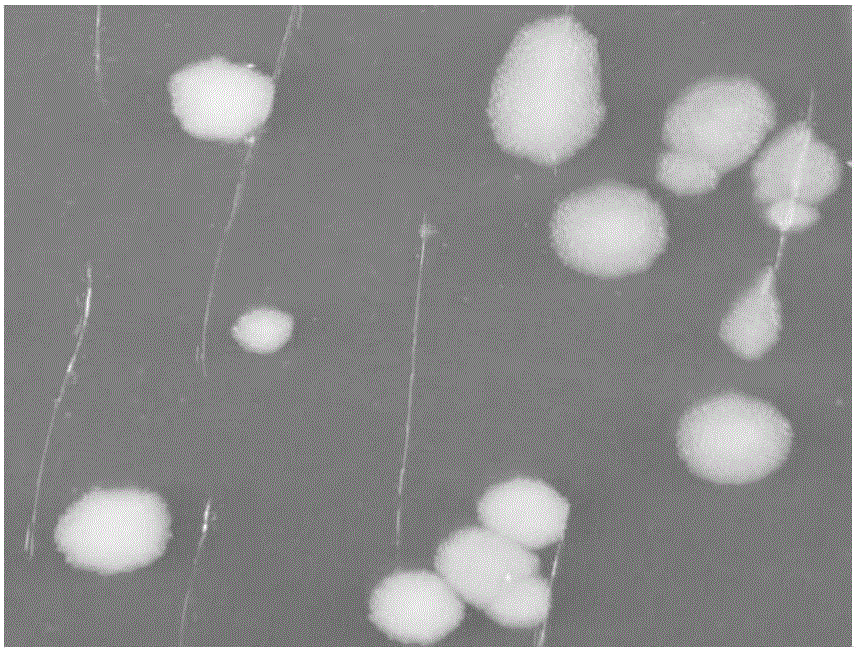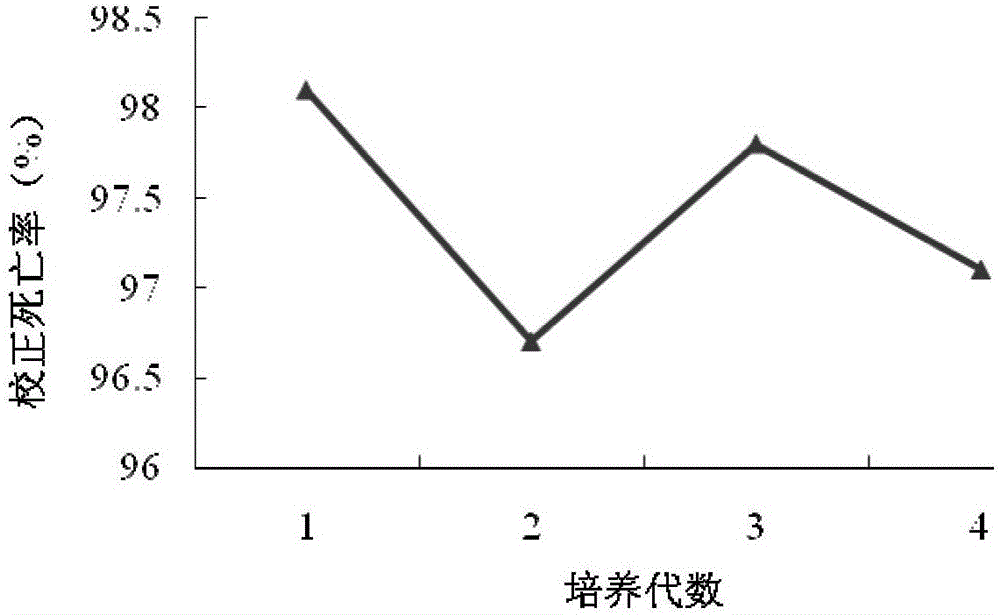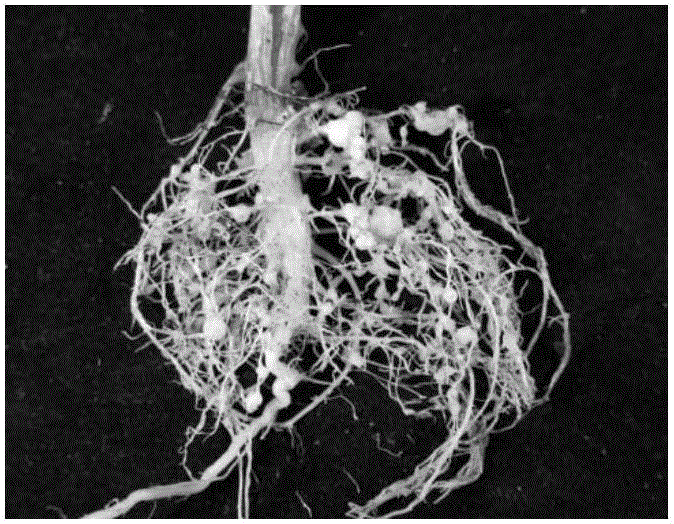Bacillus endophyticus from anti-nematode variety and application of bacillus endophyticus
A Bacillus and plant technology, applied in application, nematicide, plant growth regulator, etc., can solve problems such as affecting practical value and difficult to dominate
- Summary
- Abstract
- Description
- Claims
- Application Information
AI Technical Summary
Problems solved by technology
Method used
Image
Examples
Embodiment 1
[0038] Example 1, Isolation and Identification of Bacillus JZB126 in Plants
[0039] 1.1 Strain isolation
[0040] In November 2014, the young roots of nematode-resistant tomatoes (variety: Holland Hard Powder No. 8) were collected from the tomato field of Luao Greenhouse Base in Shunyi District, Beijing, put into ziplock bags, and brought back to the laboratory for processing. Weigh 1 g of young roots, rinse with 75% alcohol for 30 seconds, wash with sterile water three times, cut the young roots into pieces with sterile scissors, put them into a sterilized mortar and add quartz sand for grinding. Add the grinding solution to a centrifuge tube filled with 9 mL of sterile water, and the sample concentration is 10 -1 , shake well, and then make 10 -2 、10 -3 、10 -4 、10 -5Gradient dilution. Draw 200 μL of different gradient dilutions, and evenly spread them on the beef extract peptone plate, and repeat 3 times for each concentration. Placed in a 28°C incubator for cultivat...
Embodiment 2
[0054] Embodiment 2, plant root-knot nematode inhibitor and nematicidal activity thereof
[0055] 1. Cultivation of Bacillus endophyticus JZB126
[0056] Beef extract peptone medium: 3.0g beef extract, 10.0g peptone, 5.0g NaCl, 15.0g agar, distilled water to 1000ml, mix and pack, sterilize at 121°C for 20min. Bacillus endophyticus (Bacillus endophyticus) JZB126 was streaked three times on the beef extract peptone medium plate to obtain a single colony.
[0057] 2. Nematicidal activity of Bacillus endophyticus JZB126
[0058] 2.1 Obtaining eggs, oocysts and second instar larvae of M. incognita
[0059] Meloidogyne incognita was inoculated in indoor pots with the susceptible tomato variety Jiafen No. 15. After 40 days of inoculation, a large number of oocysts appeared in the tomato root system. Gently rinse the root system with water, carefully remove the oocysts, put them in 0.5% sodium hypochlorite solution for disinfection for 3 minutes, and then rinse them with sterile wa...
PUM
 Login to View More
Login to View More Abstract
Description
Claims
Application Information
 Login to View More
Login to View More - R&D Engineer
- R&D Manager
- IP Professional
- Industry Leading Data Capabilities
- Powerful AI technology
- Patent DNA Extraction
Browse by: Latest US Patents, China's latest patents, Technical Efficacy Thesaurus, Application Domain, Technology Topic, Popular Technical Reports.
© 2024 PatSnap. All rights reserved.Legal|Privacy policy|Modern Slavery Act Transparency Statement|Sitemap|About US| Contact US: help@patsnap.com










